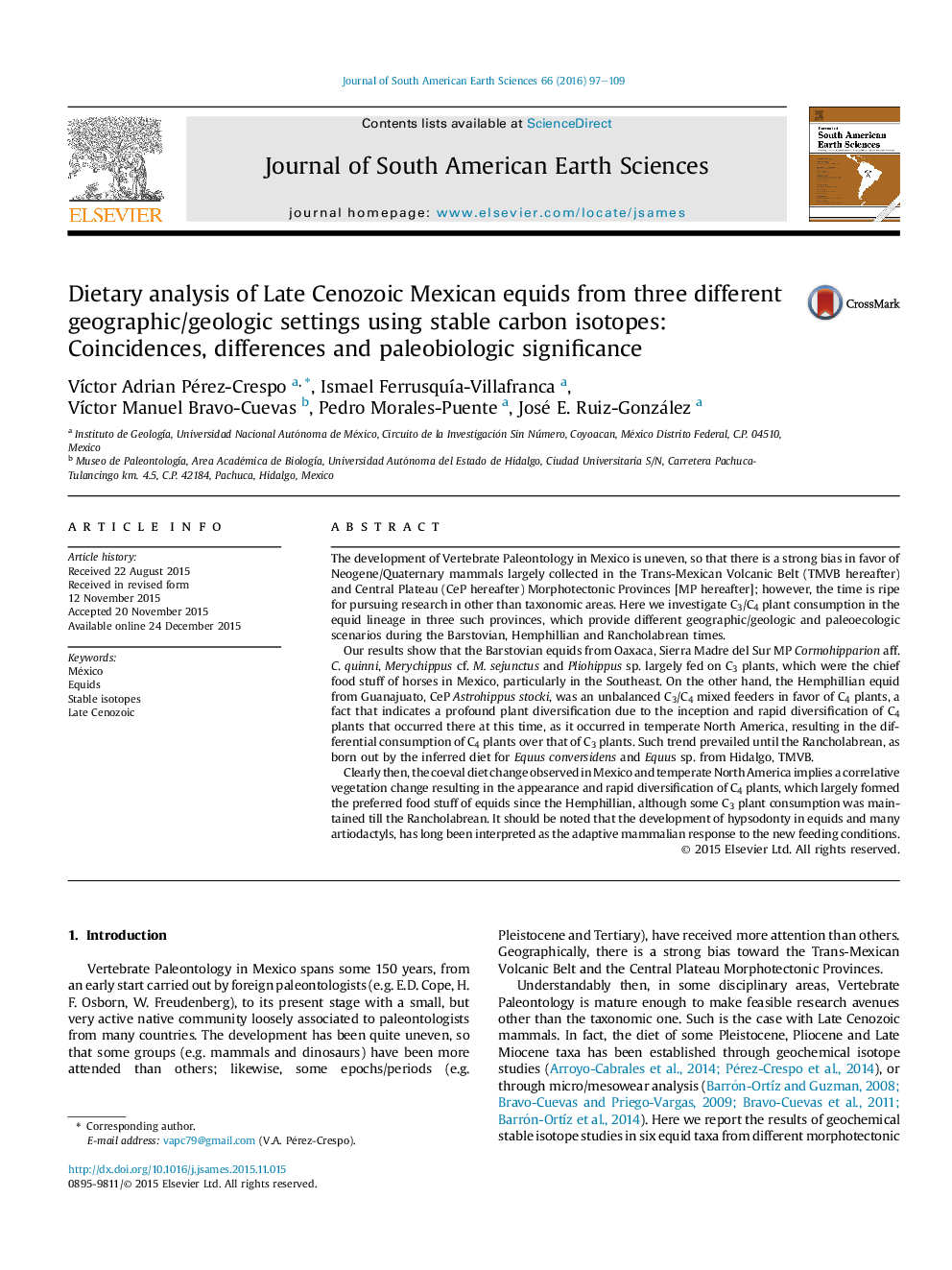| کد مقاله | کد نشریه | سال انتشار | مقاله انگلیسی | نسخه تمام متن |
|---|---|---|---|---|
| 4682093 | 1635144 | 2016 | 13 صفحه PDF | دانلود رایگان |
The development of Vertebrate Paleontology in Mexico is uneven, so that there is a strong bias in favor of Neogene/Quaternary mammals largely collected in the Trans-Mexican Volcanic Belt (TMVB hereafter) and Central Plateau (CeP hereafter) Morphotectonic Provinces [MP hereafter]; however, the time is ripe for pursuing research in other than taxonomic areas. Here we investigate C3/C4 plant consumption in the equid lineage in three such provinces, which provide different geographic/geologic and paleoecologic scenarios during the Barstovian, Hemphillian and Rancholabrean times.Our results show that the Barstovian equids from Oaxaca, Sierra Madre del Sur MP Cormohipparion aff. C. quinni, Merychippus cf. M. sejunctus and Pliohippus sp. largely fed on C3 plants, which were the chief food stuff of horses in Mexico, particularly in the Southeast. On the other hand, the Hemphillian equid from Guanajuato, CeP Astrohippus stocki, was an unbalanced C3/C4 mixed feeders in favor of C4 plants, a fact that indicates a profound plant diversification due to the inception and rapid diversification of C4 plants that occurred there at this time, as it occurred in temperate North America, resulting in the differential consumption of C4 plants over that of C3 plants. Such trend prevailed until the Rancholabrean, as born out by the inferred diet for Equus conversidens and Equus sp. from Hidalgo, TMVB.Clearly then, the coeval diet change observed in Mexico and temperate North America implies a correlative vegetation change resulting in the appearance and rapid diversification of C4 plants, which largely formed the preferred food stuff of equids since the Hemphillian, although some C3 plant consumption was maintained till the Rancholabrean. It should be noted that the development of hypsodonty in equids and many artiodactyls, has long been interpreted as the adaptive mammalian response to the new feeding conditions.
Journal: Journal of South American Earth Sciences - Volume 66, March 2016, Pages 97–109
